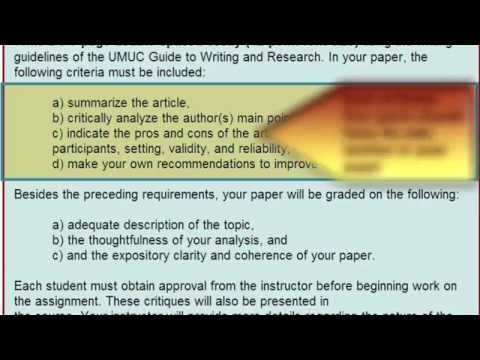When you’re writing an article analysis, it’s important to focus on only one or two aspects. Throughout the article, include the evidence for each point briefly. Your first sentence should state the main thesis, and then the second and third sentences should state evidence that supports the point. In the last sentence, conclude with a conclusion about the usefulness of the article. You can use the same formula for each sentence, but you’ll need to focus on a few specific aspects.
Writing an article analysis
To begin your article analysis, make a copy of the article. Print it out or use a note-taking program to take notes. Be sure to include page numbers because you will need these for citations. After printing the article, read it slowly, highlighting the main points of the article. This will allow you to refer to the arguments made by the author throughout your article analysis. Here are some tips for writing an article analysis:
Decide on your purpose and thesis. You may want to make a statement, question, or make an argument. You may want to include your own viewpoint as well, or you may wish to analyze the author’s perspective in relation to your own. Be sure to compare your article to other articles written on the same subject matter, and make your analysis based on those other works. Make sure your analysis is original, if possible, but also keeps in mind the audience.
Using transition words
A transition is a word or phrase that links two different sections of your writing. Generally, these words are used to make logical connections. However, the word “transition” loses its significance when it is misused. For example, many people use the word “and” at the beginning of a sentence, but this is not appropriate for academic writing. Other words used as transitions are “but” or “because,” which are not formal words.
Transitional words and phrases help the reader follow the flow of your text. They can add information to your ideas and make your paper more interesting. A good transition word is a synonym for “addition,” such as “similar to” or “agree.” These words have a variety of functions. If you use them correctly, they help your readers understand the connection between two pieces of information. For example, in conclusion may be a good transition word.
Using active verbs
Using active verbs when writing an article review will help you convey the essence of what you’ve learned in your article. For example, instead of “I was robbed on Sunday night,” use the active verb “someone stole my car.” This way, you’ll emphasize the action of the robber instead of the bad event. This is especially important when writing about a complex topic such as product synthesis.
Active verbs are more common in scientific writing. Using the active voice with inanimate subjects can be difficult and even inappropriate for some Asian students. However, it’s important to remember that passive verbs are not anthropomorphic; they’re allowed when the subject is an inherent quality of the verb. To address this issue, the present study examined 2979 subject-verb pairs from the Science News. This analysis revealed the relative frequency of inanimate subjects in these types of writings.
Defining the population of theoretical or substantive interest
Defining the population of theoretical or substantial interest in an article analysis refers to a group of participants who share an interest in the study under consideration. This group is a statistical construct that allows researchers to focus their research efforts. Although there is no single group that is representative of all potential study subjects, there must be a population that accurately represents the target audience and provides useful information.
The population of interest should share the criteria outlined in the research question and justify the research goal. For example, if the study is investigating the purchase behavior of festive buyers, it must include customers who typically purchase goods only during festive seasons, and these purchases must be made within the past four weeks. Researchers use these inclusion and exclusion criteria to identify the characteristics of the population to study. By selecting a smaller population, the research question can be more focused.
Writing a summary of the main points
When writing a summary of the main points of an analytical article, focus on a few key aspects of the piece and develop ideas that inform the reader. Your first sentence should contain the author’s name and title of the article. Your next five sentences should contain the main thesis, the evidence supporting that point, and the conclusion of the piece’s usefulness. You can also include a brief explanation of the purpose of the article and the main ideas you found.
A good summary should include the author’s name, title, and last name. Include your own thoughts about the article, if applicable. Depending on the nature of your assignment, you may also include a table of synonyms. A summary of the article’s main points should be concise, yet clearly reflect the ideas of the author. If the author does not provide his full name, use his/her title.

